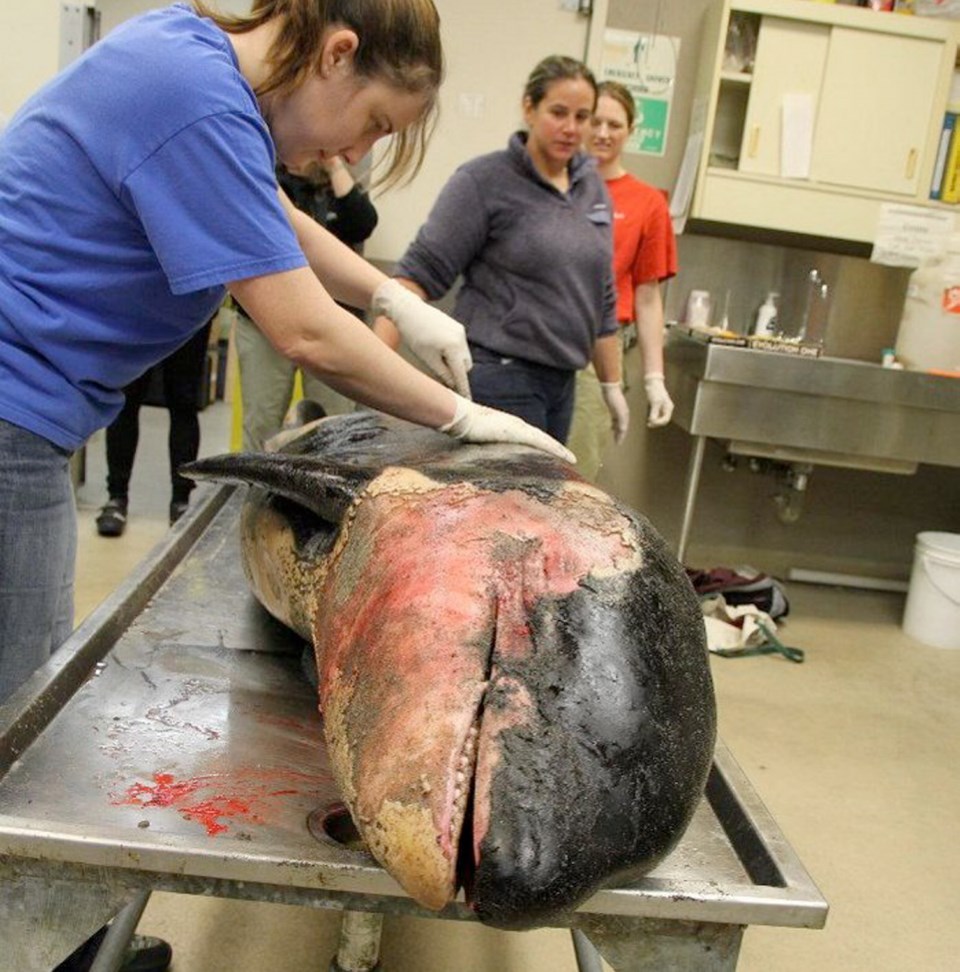A dead killer whale calf that washed up near Sequim in Washington state last week was a member of the endangered southern residents, according to tests conducted by the National Oceanic and Atmospheric Administration’s Fisheries Service.
“It was a male, about 7 1/2-feet [2.2 metres] long, and it was probably only days old. But it was not stillborn as the lungs were inflated,” said service spokesman Brian Gorman.
The three southern resident pods, with only about 86 members, cannot afford to lose any calves, though it is not unusual for them to die during their first year, Gorman said.
“Every calf in the southern resident population that doesn’t make it [leaves the pods] one step further away from recovery,” he said.
“But in the wild, a lot of animals don’t make it. Mortality for killer whales, and especially for those born late in the year in the cold months, is about 50 per cent.”
Further DNA tests will be conducted on the calf to determine its paternity, Gorman said.
The carcass could provide valuable information about the population, he said.
“We will learn something from this calf in terms of toxic loading. If it has never nursed, it will give us some idea about what a killer whale is like that has never been exposed to toxic chemicals,” Gorman said.
Pollution, noise and dwindling numbers of chinook salmon are among the threats faced by the southern residents. The pods are primarily found in waters south of Vancouver Island.



